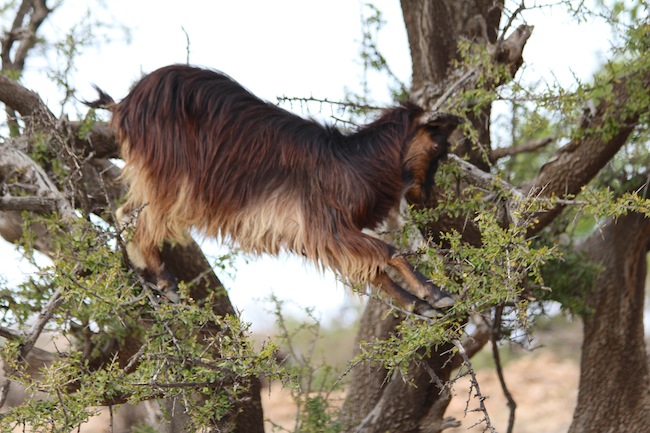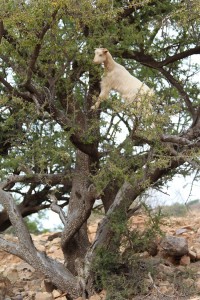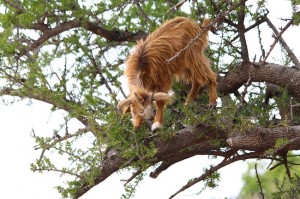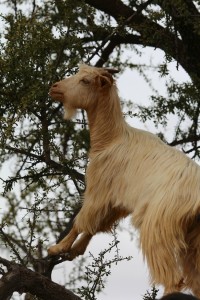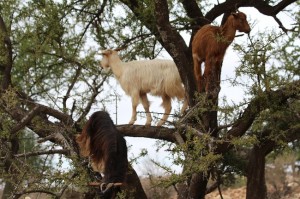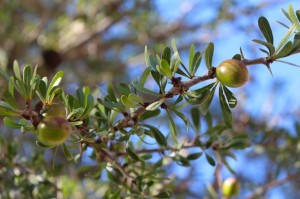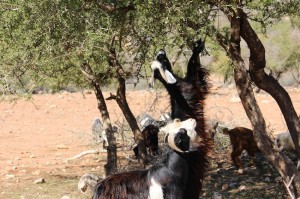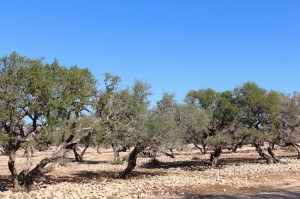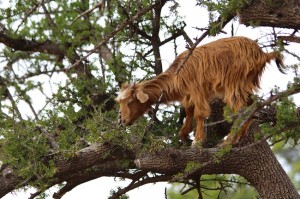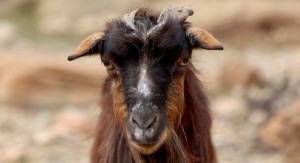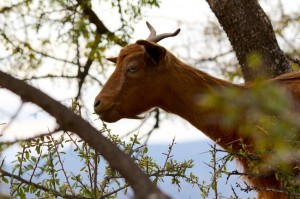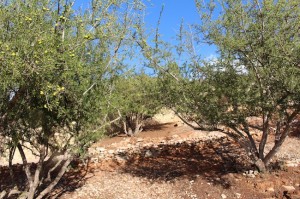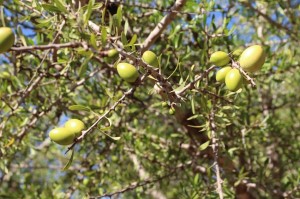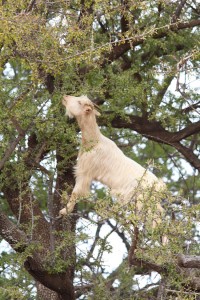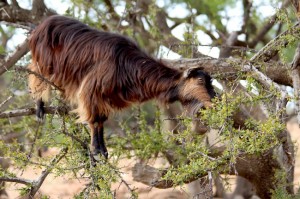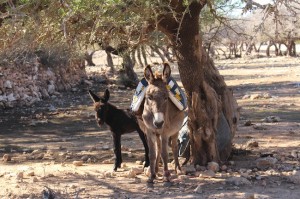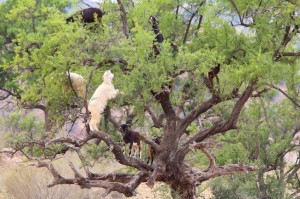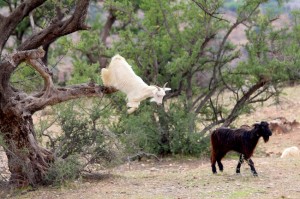“Goats up trees!”- the shout that brought Charlie Charleston to a rumbling stop on the mountain road, as a shaggy white billy hopped onto a branch in the valley below.
We had been on a mission to find goats up trees since we were told that our hoofed and horned friends were the only creatures allowed by law to climb the fabled Argan trees. Not humans – just kids!
Argan trees are protected in Morocco because of the immense value of the oil that is produced from its nuts. The oil can be used for cooking, medicine and cosmetics for nails, hair and skin – anything really, it is magic stuff.
But it is the collection of the nuts and the relationship with the goats that we found most interesting and entertaining.
Originally the nuts were harvested as a “post-goat” production, if you get our meaning – much like civet coffee. It fell to the women of the villages to sift through the goat droppings to retrieve the partially digested nuts.
Thankfully for the women, times have changed and not only do they no longer use that particular method of softening the fruit, but there is now a high chance that the enterprise selling the oil, soap, powder and other much-prized Argan nut by-products, is a women’s co-operative and not a corporation. Apparently the old Yorkshire saying “where there’s muck, there’s brass” is very true in this case.
Argan trees only grow in a small area of Morocco, in the Anti Atlas region and among the many things we were told about this fabled tree, was that only the nuts that had fallen from the tree can be taken – to maintain the trees protected status and in order to avoid them being over-exploited.
The women collect them from around the base of the tree, pack them up and take them off to be processed. We have passed many patient donkeys shading under the Argan trees, waiting for their panniers to be filled.
Obviously if a herd of goats has just been tap-dancing through the branches, there’s a good chance they won’t have to wait too long.
So, next time you see Argan oil on the shelves – you have the flying goats of Morocco to thank for it!

